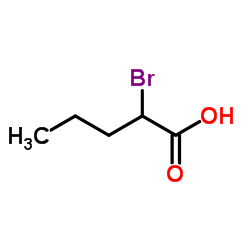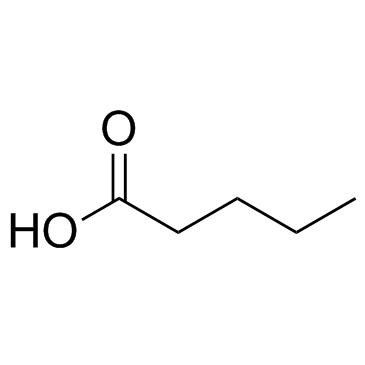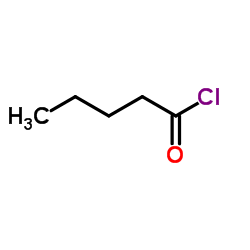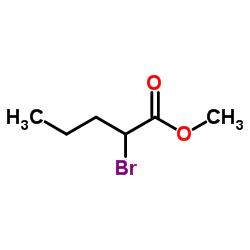42768-45-6
| Name | 2-Bromopentanoyl chloride |
|---|---|
| Synonyms |
2-bromo-pentanoyl chloride
2-bromo-1-chloropentan-1-one 2-Brom-valerylchlorid a-Bromovaleroyl chloride a-Bromopentanoyl chloride Pentanoyl chloride,2-bromo 2-BROMOVALERYL CHLORIDE |
| Density | 1.498 g/cm3 |
|---|---|
| Boiling Point | 179.384ºC at 760 mmHg |
| Molecular Formula | C5H8BrClO |
| Molecular Weight | 199.47300 |
| Flash Point | 62.29ºC |
| Exact Mass | 197.94500 |
| PSA | 17.07000 |
| LogP | 2.31540 |
Synonym:2-Bromopentanoyl chloride; alpha-Bromovaleroyl chloride Section 2 - COMPOSITION, INFORMATION ON INGREDIENTS
Risk Phrases: 29 34 Section 3 - HAZARDS IDENTIFICATION EMERGENCY OVERVIEW
Contact with water liberates toxic gas. Causes burns. Potential Health Effects Eye: Causes eye burns. Lachrymator (substance which increases the flow of tears). Skin: Harmful if absorbed through the skin. Causes skin burns. Ingestion: Harmful if swallowed. Causes gastrointestinal tract burns. Inhalation: Causes chemical burns to the respiratory tract. Chronic: No information found. Section 4 - FIRST AID MEASURES Eyes: In case of contact, immediately flush eyes with plenty of water for at least 15 minutes. Get medical aid immediately. Skin: In case of contact, immediately flush skin with plenty of water for at least 15 minutes while removing contaminated clothing and shoes. Get medical aid immediately. Wash clothing before reuse. Ingestion: If swallowed, do NOT induce vomiting. Get medical aid immediately. If victim is fully conscious, give a cupful of water. Never give anything by mouth to an unconscious person. Inhalation: If inhaled, remove to fresh air. If not breathing, give artificial respiration. If breathing is difficult, give oxygen. Get medical aid. Notes to Physician: Treat symptomatically and supportively. Section 5 - FIRE FIGHTING MEASURES General Information: As in any fire, wear a self-contained breathing apparatus in pressure-demand, MSHA/NIOSH (approved or equivalent), and full protective gear. Use of water will produce irritating and toxic vapors of hydrogen chloride. Hydrochloric acid solutions react with most metals, forming flammable hydrogen gas. Extinguishing Media: Use foam, dry chemical, or carbon dioxide. DO NOT USE WATER! Section 6 - ACCIDENTAL RELEASE MEASURES General Information: Use proper personal protective equipment as indicated in Section 8. Spills/Leaks: Absorb spill with inert material (e.g. vermiculite, sand or earth), then place in suitable container. Provide ventilation. Do not expose spill to water. Section 7 - HANDLING and STORAGE Handling: Wash thoroughly after handling. Remove contaminated clothing and wash before reuse. Use with adequate ventilation. Do not allow water to get into the container because of violent reaction. Do not get in eyes, on skin, or on clothing. Do not breathe vapor or mist. Storage: Store in a cool, dry, well-ventilated area away from incompatible substances. Corrosives area. Store protected from moisture. Section 8 - EXPOSURE CONTROLS, PERSONAL PROTECTION Engineering Controls: Facilities storing or utilizing this material should be equipped with an eyewash facility and a safety shower. Use adequate ventilation to keep airborne concentrations low. Exposure Limits CAS# 42768-45-6: Personal Protective Equipment Eyes: Wear chemical splash goggles and face shield. Skin: Wear appropriate gloves to prevent skin exposure. Clothing: Wear appropriate protective clothing to prevent skin exposure. Respirators: The absence of published exposure limits does not mean that a substance poses no inhalation hazard. If inhalation exposure is likely or if irritation or other symptoms are experienced, wear a NIOSH/MSHA or European Standard EN 149 approved respirator. Section 9 - PHYSICAL AND CHEMICAL PROPERTIES Physical State: Liquid Color: clear, colorless to pale yellow Odor: Not available. pH: acidic Vapor Pressure: Not available. Viscosity: Not available. Boiling Point: 115 deg C @ 3 mm Hg Freezing/Melting Point: Not available. Autoignition Temperature: Not available. Flash Point: Not available. Explosion Limits, lower: Not available. Explosion Limits, upper: Not available. Decomposition Temperature: Solubility in water: Specific Gravity/Density: Molecular Formula: C5H8BrClO Molecular Weight: 199.47 Section 10 - STABILITY AND REACTIVITY Chemical Stability: Stable at room temperature in closed containers under normal storage and handling conditions. Material hydrolyzes in contact with moisture/water releasing toxic and corrosive fumes of hydrogen chloride and aqueous hydrochloric acid. Conditions to Avoid: Moisture, excess heat. Incompatibilities with Other Materials: Strong bases, metals, strong oxidizing agents. Hazardous Decomposition Products: Hydrogen chloride, carbon monoxide, carbon dioxide, bromide fumes. Hazardous Polymerization: Has not been reported Section 11 - TOXICOLOGICAL INFORMATION RTECS#: CAS# 42768-45-6 unlisted. LD50/LC50: Not available. Carcinogenicity: 2-Bromovaleryl chloride - Not listed by ACGIH, IARC, or NTP. Section 12 - ECOLOGICAL INFORMATION Section 13 - DISPOSAL CONSIDERATIONS Dispose of in a manner consistent with federal, state, and local regulations. Section 14 - TRANSPORT INFORMATION IATA Shipping Name: Water-Reactive Liquid, Corrosive, N.O.S. Hazard Class: 4.3 UN Number: 3129 Packing Group: II IMO Shipping Name: Water-Reactive Liquid, Corrosive, N.O.S. Hazard Class: 4.3 UN Number: 3129 Packing Group: II RID/ADR Shipping Name: Water-Reactive Liquid, Corrosive, N.O.S. Hazard Class: 4.3 UN Number: 3129 Packing group: II Section 15 - REGULATORY INFORMATION European/International Regulations European Labeling in Accordance with EC Directives Hazard Symbols: C Risk Phrases: R 29 Contact with water liberates toxic gas. R 34 Causes burns. Safety Phrases: S 26 In case of contact with eyes, rinse immediately with plenty of water and seek medical advice. S 36/37/39 Wear suitable protective clothing, gloves and eye/face protection. S 45 In case of accident or if you feel unwell, seek medical advice immediately (show the label where possible). WGK (Water Danger/Protection) CAS# 42768-45-6: No information available. Canada None of the chemicals in this product are listed on the DSL/NDSL list. CAS# 42768-45-6 is not listed on Canada's Ingredient Disclosure List. US FEDERAL TSCA CAS# 42768-45-6 is not listed on the TSCA inventory. It is for research and development use only. SECTION 16 - ADDITIONAL INFORMATION N/A |
| HS Code | 2915900090 |
|---|
|
~% 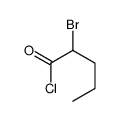
42768-45-6 |
| Literature: Abderhalden; Zeisset Fermentforschung, 1930 , vol. 11, p. 171,177 Chem. Zentralbl., 1931 , vol. 102, # I p. 2862 |
|
~% 
42768-45-6 |
| Literature: Durman, John; Hunt, Paul G.; Warren, Stuart Tetrahedron Letters, 1983 , vol. 24, # 20 p. 2113 - 2116 |
|
~% 
42768-45-6 |
| Literature: Fourneau; Florence Bulletin de la Societe Chimique de France, 1928 , vol. <4>43, p. 211 |
| Precursor 3 | |
|---|---|
| DownStream 5 | |
| HS Code | 2915900090 |
|---|---|
| Summary | 2915900090 other saturated acyclic monocarboxylic acids and their anhydrides, halides, peroxides and peroxyacids; their halogenated, sulphonated, nitrated or nitrosated derivatives VAT:17.0% Tax rebate rate:9.0% Supervision conditions:AB(certificate of inspection for goods inward,certificate of inspection for goods outward) MFN tariff:5.5% General tariff:30.0% |
